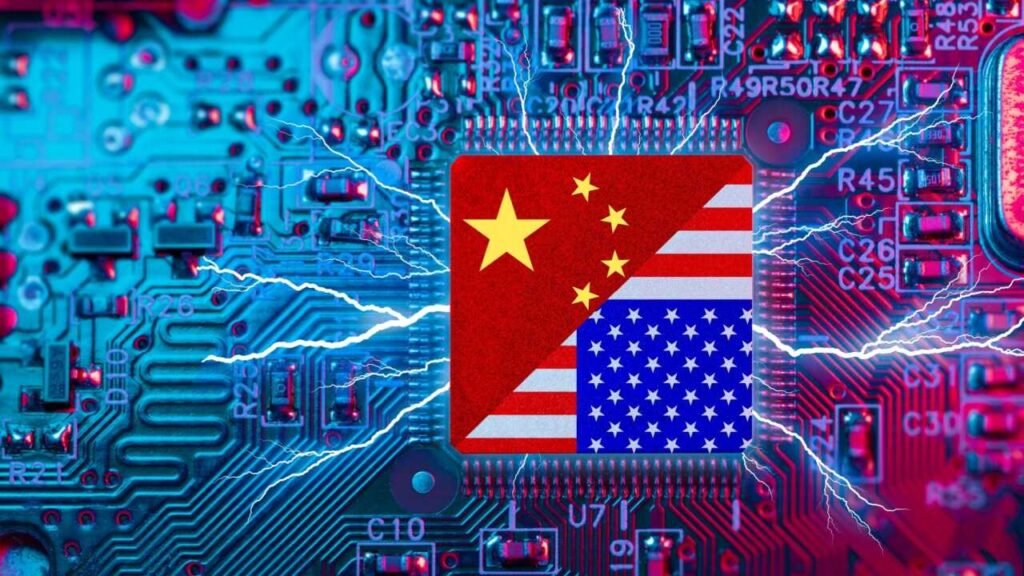In a new move to protect America’s technological edge, former President Donald Trump has unveiled a controversial policy aimed at securing U.S. dominance in the rapidly advancing field of artificial intelligence (AI). With AI playing an increasingly influential role in everything from economic growth to national security, Trump’s policy shift seeks to ensure that the United States remains a leader in AI technology, despite mounting competition from countries like China.
The policy change reflects the growing importance of AI in shaping global power dynamics, as the U.S. looks to preserve its advantage in key sectors such as defense, business, and technology. Experts argue that the future of AI could reshape entire industries and determine which countries hold the reins of innovation and global leadership. With China’s ambitious push to dominate AI by 2030, the race for technological supremacy has never been more urgent.
Why the Focus on AI?
AI is no longer just a buzzword. It has become an essential component of global economic and political power. From self-driving cars to automation in industries, AI is set to influence almost every facet of modern life. It has already begun to change the way businesses operate, how national security is managed, and how we interact with technology on a daily basis.
Countries around the world, particularly China, have recognized the importance of AI and are rapidly making strides to improve their own capabilities. With China positioning itself as a key player in the race for AI supremacy, experts have raised alarms over the potential loss of the U.S.’s technological leadership. Trump’s new policy appears to be a direct response to these concerns, aiming to prevent China and other countries from outpacing the U.S. in developing AI technologies.
By introducing these new AI regulations, Trump is positioning the U.S. to remain at the cutting edge of innovation. His administration sees AI as a core component of national security and economic prosperity, and this new policy aims to further strengthen America’s place at the forefront of AI research, development, and deployment.
The Role of the U.S. Government in AI
A key aspect of Trump’s policy revolves around increasing government investment in AI research and development. The administration recognizes that maintaining global leadership in AI requires a unified effort from both the public and private sectors. As part of this strategy, Trump’s policy proposes greater funding for AI education and training programs to help ensure that the U.S. has a workforce equipped to handle the demands of a rapidly evolving technological landscape.
The government also plans to ramp up efforts to promote innovation through collaboration with tech companies. As the private sector has been a major driver of AI advancements, the policy suggests that a partnership between government agencies and private tech firms will be essential in advancing AI technologies while adhering to strict ethical guidelines.
The policy also calls for the creation of a comprehensive regulatory framework aimed at overseeing AI development. This includes establishing standards for transparency, accountability, and fairness in the use of AI systems. Trump’s administration has made it clear that it is not just about staying ahead in AI research but also ensuring that the technologies developed are aligned with American values, such as privacy rights and the protection of civil liberties.
Facing the Chinese Challenge: The Global AI Arms Race
The global competition for AI supremacy is intensifying, and the U.S. faces significant challenges, particularly from China. China has made AI development a priority, with ambitious plans to become the world leader in AI by 2030. The country is investing heavily in AI research, with government-backed initiatives aimed at rapidly advancing technologies such as machine learning, robotics, and autonomous systems.
Trump’s policy seeks to protect U.S. interests by ensuring that China does not surpass America in critical areas of AI development. The new policy includes measures to restrict foreign access to sensitive AI technologies and ensures that the U.S. maintains a technological advantage in areas like military applications and cybersecurity. Additionally, the U.S. will continue to monitor the development of AI technologies in adversarial nations to safeguard against the potential misuse of AI in warfare and surveillance.
AI’s increasing role in military applications has raised alarms, as countries race to develop autonomous weapons systems and advanced defense technologies. Trump’s policy aims to ensure that the U.S. military remains the most advanced in the world, with AI playing a central role in next-generation defense strategies.
Ethical Considerations: Regulating AI Development
As the U.S. looks to dominate the AI space, there are increasing concerns over the ethical implications of AI technologies. Issues such as data privacy, surveillance, and algorithmic bias are hotly debated, with many arguing that the rise of AI must be carefully managed to prevent harm.

read also – Trump’s USPS Reform Plan: Will It Save or Sink the Service?
Trump’s AI policy does address these concerns, with an emphasis on developing clear ethical guidelines for AI technologies. Under the new regulations, companies will be required to ensure transparency in the algorithms they use and demonstrate that their systems are free from discrimination. The government aims to ensure that AI technologies are developed in ways that align with U.S. values of fairness, privacy, and transparency.
However, some critics argue that the policy may not go far enough in addressing the risks associated with AI. For instance, some worry that the push for AI dominance may lead to a rush to develop new technologies without fully understanding the social and ethical consequences. Advocates for stronger regulations suggest that the government should do more to address the potential harms AI could inflict on society, including the displacement of jobs and the perpetuation of biases in decision-making systems.
Balancing Innovation and Security
While the push to dominate AI is a central theme of Trump’s new policy, there are significant challenges ahead in balancing innovation with security. The U.S. must continue to foster an environment of innovation that encourages technological advancement while also ensuring that emerging technologies are secure and ethically developed.
One of the major hurdles in maintaining America’s AI leadership is the need for a skilled workforce. AI is a highly specialized field, and there is an increasing demand for talent in data science, machine learning, and robotics. The policy includes provisions to address this issue by funding education and training programs to develop the next generation of AI experts. These programs are intended to help ensure that America has the talent it needs to remain competitive in the global AI race.
Moreover, the challenge of maintaining AI security is growing. As more AI systems are deployed in critical industries such as healthcare, finance, and energy, the risk of cyberattacks and data breaches increases. Trump’s policy includes measures aimed at securing AI systems from malicious actors, with a focus on protecting sensitive data and preventing the misuse of AI in cyber warfare.
A Complex Global Landscape
In the realm of global trade and diplomacy, the U.S. will face challenges in maintaining its leadership in AI. While Trump’s policy focuses on protecting American interests, it also acknowledges the need for international collaboration on AI standards. AI is a global issue, and the U.S. will need to work with other nations to develop international norms and regulations that promote the responsible use of AI technologies.
At the same time, Trump’s policy underscores the importance of maintaining a competitive edge. The U.S. government aims to ensure that America’s leadership in AI is not only preserved but expanded, positioning the nation as the global center of innovation and development in this transformative field.
Conclusion: Navigating the Future of AI
Trump’s new AI policy is a bold step toward safeguarding America’s leadership in a rapidly changing world. As AI technologies continue to shape the future of industries, security, and global geopolitics, the U.S. must remain vigilant in ensuring that it remains at the cutting edge of innovation.
While the policy addresses many of the concerns surrounding AI’s rise, its long-term success will depend on how well it balances innovation, security, and ethics. If implemented effectively, Trump’s AI policy could help secure America’s technological dominance for years to come, ensuring that the U.S. remains a key player in shaping the future of AI.





